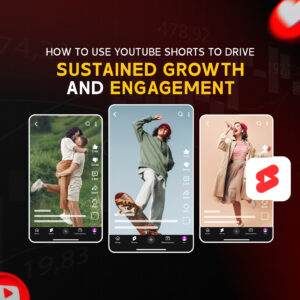No matter what profile you’re working on, you probably have your fair share of wild myths.
From myths such as JavaScript has something to do with Java to development works best when there is just one way to do it, traditional beliefs are everywhere. This is no different for the SEO segment. In fact, there are many, and they’re growing every year.
Let’s bust some of the biggest SEO myths that winds you up the most. Let us dispel some of these untruths and send them to the history books!
Myth 1: Having HTTPS (secure connection) site is crucial for SEO

Many people have developed a general notion that URLs starting with “http://”(standard HTTP) and not “https://” , can make your rankings suffer. So, it’s good if you plan to move over to the more secure HTTPS protocol, but don’t freak out if you haven’t done it yet. There are more important factors that Google is looking at, such as the presence of high-quality content.
Myth 2: Meta descriptions have a huge impact on search rankings

Once upon a time, meta tags were considered an important part of the SEO process and they still are. While meta robots tag acts as an important tool for controlling crawler access, but they’re no longer the central focus of SEO. Meta descriptions have no bearing on search rankings. But having a relevant and compelling meta descriptions still offers a major opportunity to separate yourself from the riff-raff and convince searchers that your page is worth navigating to.
Myth 3: Excess keywords leads to better search ranking

Keywords surely enhances your perceptibility. But with Google’s latent semantic indexing (LSI), the contents of a webpage are crawled by the search engine and the most common words or phrases are combined and identified as the keywords of that page. Thus, your focus should be optimizing your page for the user experience and not just stuffing it with keywords. Write the content for the user — relevant, high-quality content.
Myth 4: Too much content on your homepage
Your homepage acts as a gateway to your business. Visualize it! This is your chance to make a first impression and convey what you’re all about. Your homepage content should endeavor to deliver sufficient information in crisp and clear manner. Make sure your visitors leave satisfied, not overwhelmed or underwhelmed — and certainly not perplexed!
Myth 5: Too many pages get more traffic to your site
Logically, you would think that the larger the footprint of your website, more will be the traffic to your website. But this is where you go wrong. Have your content at its best. If you do not have good content, you will not rank well and all of those pages you created will not help your cause. The aim should be to publish what is most relevant. Nowadays, if you have poor content it is possible you may face a Google penalty, so make sure you generate great quality not quantity.
Myth 6: Good user experience is just an addition
Google has incorporated new metrics such as a user’s experience and website engagement into their ranking algorithm. It makes sense. If Google sends you to a web page, they want to make sure you have a good experience on that page. They are after all a business too, and thus they want to delight their users. Focus on things like page load time, bounce rate, time on page, page views per visit, and how far a person scrolls down the page. As long as you offer an amazing user experience, your website traffic will organically rise to the top.
Myth 7: Local SEO doesn’t matter

If you’re a local business, optimizing for local search won’t only help you get found, but it will help you get found by people who are nearby and more likely to buy from you. Google’s new Pigeon algorithm treats local search rankings more like traditional search rankings, taking hundreds of ranking signals into account. Local SEO allows Google to bubble your local content to the surface of search results.
Myth 8: Image optimization is not important
Photos were once a bit of a blogger afterthought. Most of us thought of them as eye candy. But here’s the thing: images can be used to bring in organic traffic via search engine image results. By spending just a little extra time on your photo posting routine, you can transform your photos from candy to cultivator. Excluding images will prevent your website’s SEO from being the best it can be. Providing descriptive titles and captions for your images offers one more channel for you to get searched.
Myth 9: Mobile optimization strategy has no significance
“Do I need a mobile friendly website?” If you are still asking yourself this question, and haven’t already got a mobile website, you need to get one soon. Why? Because your customers are increasingly going mobile. It’s time to move to responsive design that makes your page adapt to the visitor’s device and displays information that is sized and zoomed appropriately so it’s easy to read. Your website should be mobile-friendly by default and look beautiful for visitors from any device.
Reading other blogs and learning from knowledgeable content marketers can help you discover more ways to drive more traffic to your site.
The web is a dynamic platform, after all. But you’ve got to do it with discretion. Most of the advice out there isn’t borne out of deep understanding about search engine optimization and how search engines work.
It’s time you debunk everything you know that aren’t true and find even better ways to cater for your target audience.


